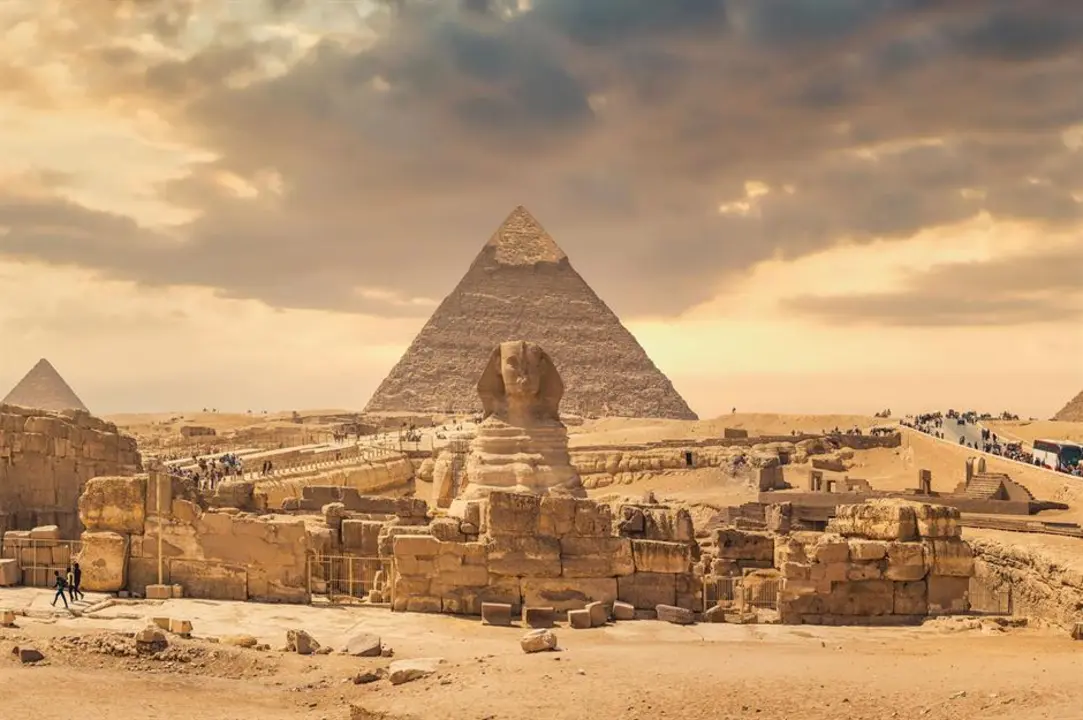Understanding the Agricultural Revolution
The Agricultural Revolution is a fascinating and complex period in human history that laid the groundwork for modern civilization. As a blogger who's passionate about history, I wanted to dive into the timeline of this monumental era and share its significance with my readers. In this article, we'll explore the key milestones and developments that shaped the Agricultural Revolution, providing a comprehensive overview of this transformative time in human history.
The Dawn of Agriculture: Domestication of Plants and Animals
One of the earliest and most critical developments in the Agricultural Revolution was the domestication of plants and animals. This process began around 10,000 BCE, when humans started to transition from a nomadic, hunter-gatherer lifestyle to a more sedentary, agricultural one. This shift allowed for the cultivation of crops and the rearing of livestock, providing a more reliable and sustainable food source.
As people began to settle in one place, they experimented with cultivating different types of plants. Over time, they selectively bred plants with desirable traits, such as larger seeds and faster growth rates. This led to the development of early staple crops like wheat, barley, and rice. Similarly, humans began to domesticate animals like sheep, goats, pigs, and cattle, which provided not only food but also other valuable resources such as wool, leather, and labor.
Advancements in Agricultural Tools and Techniques
As agriculture became more prevalent, humans had to develop new tools and techniques to optimize their farming practices. One of the earliest innovations was the invention of the plow, which allowed for more efficient soil preparation and planting. This simple but essential tool greatly increased agricultural productivity and enabled the cultivation of larger areas of land.
Other innovations during the Agricultural Revolution included the development of irrigation systems and crop rotation. Irrigation allowed for the controlled distribution of water to crops, ensuring their growth even in arid regions. Meanwhile, crop rotation involved alternating different types of crops in the same plot of land, which helped maintain soil fertility and reduce the spread of pests and diseases.
The Rise of Agricultural Communities and Societies
As agriculture became more established, it led to the development of agricultural communities and societies. These early settlements often formed around fertile regions where crops could be easily grown, such as the Fertile Crescent in the Middle East and the Nile River Valley in Egypt. The abundance of food allowed for a surplus, which in turn supported larger populations and the growth of villages and towns.
With the growth of these communities came increased social organization and hierarchy. As some individuals focused on agriculture, others could specialize in other professions, such as artisans, traders, and priests. This specialization and division of labor contributed to the development of early civilizations and the emergence of complex societies.
Trade, Exchange, and the Spread of Agricultural Knowledge
As agricultural communities grew and developed, so did trade and exchange networks. The surplus of food and other resources allowed for bartering and trading between different settlements. This exchange of goods and ideas facilitated the spread of agricultural knowledge, techniques, and innovations across different regions and cultures.
For example, the knowledge of crop cultivation and animal domestication spread from the Fertile Crescent to other parts of the world like Europe, Asia, and Africa. This global diffusion of agricultural practices played a crucial role in shaping human history and the development of diverse civilizations.
Environmental Impacts and Consequences of the Agricultural Revolution
While the Agricultural Revolution brought about many positive developments for human societies, it also had significant environmental impacts and consequences. One of the most notable changes was the widespread deforestation that occurred as people cleared land for agriculture. This loss of forests disrupted ecosystems and contributed to the extinction of many plant and animal species.
Additionally, the domestication of animals led to the spread of diseases from animals to humans, as people lived in closer proximity to their livestock. This increased exposure to zoonotic diseases likely played a role in the emergence of pandemics throughout human history.
The Legacy of the Agricultural Revolution
The Agricultural Revolution was a transformative period in human history that laid the foundation for the modern world. By domesticating plants and animals, developing new tools and techniques, and fostering the growth of agricultural communities, our ancestors were able to transition from a nomadic existence to a more settled and stable way of life. This shift paved the way for the rise of civilization, trade, and technological advancements that have continued to shape our lives today.
As we reflect on the timeline of the Agricultural Revolution, it's essential to recognize both its positive contributions and its negative consequences. By understanding this critical period in our history, we can better appreciate the complex and dynamic relationship between humans and the environment, and strive to create a more sustainable future for ourselves and future generations.
